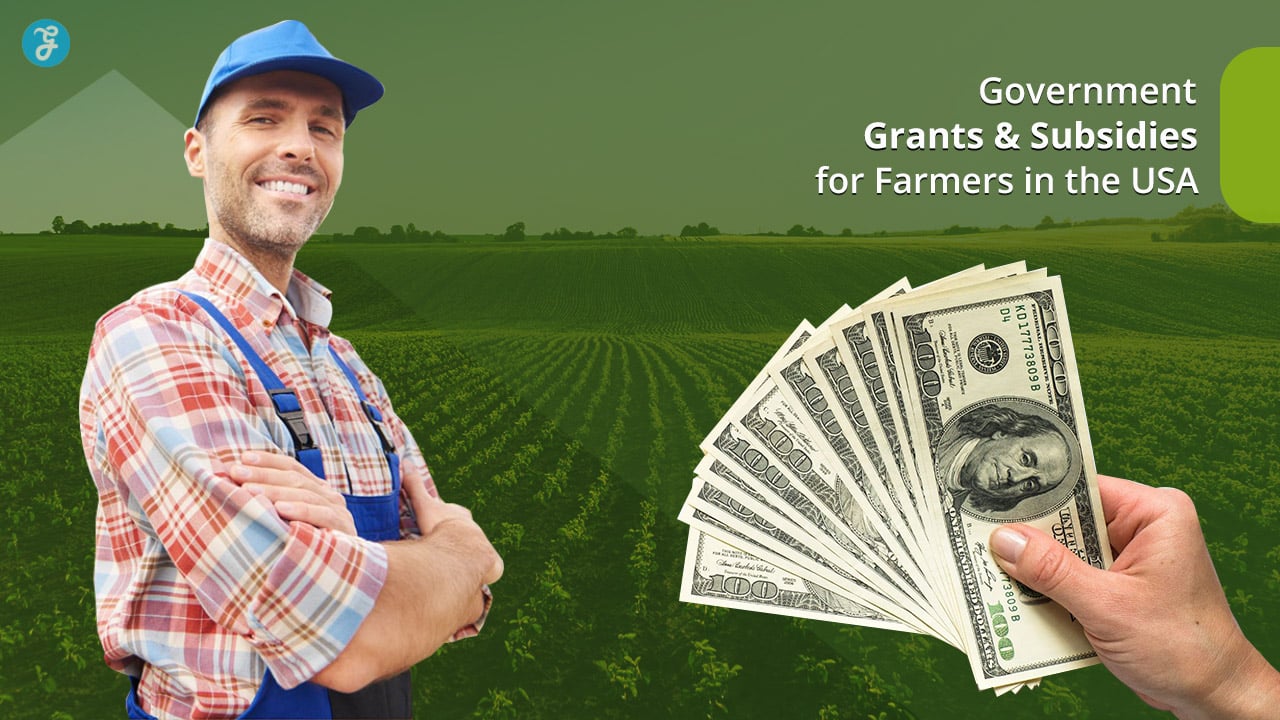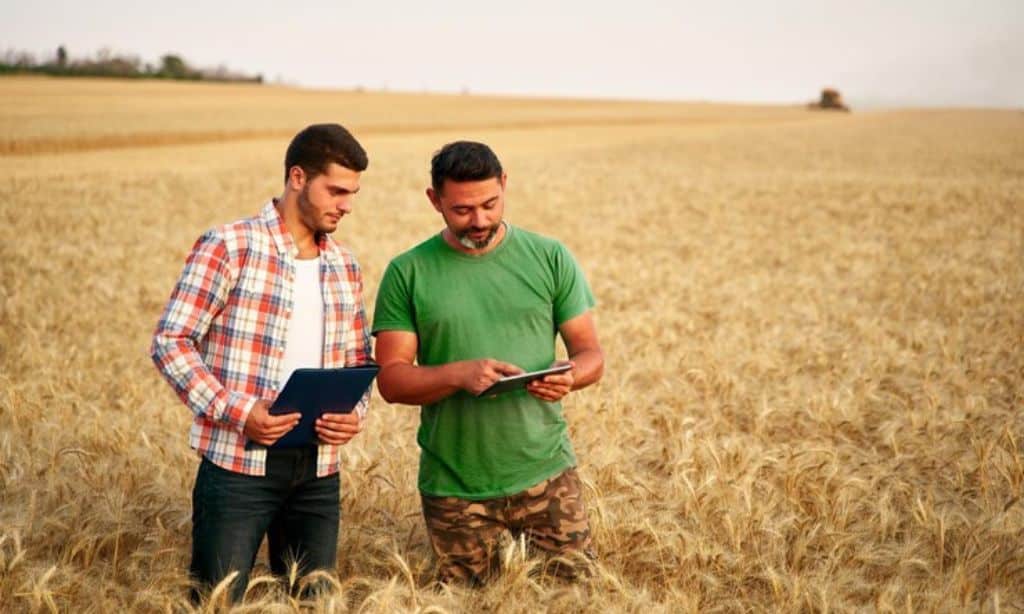The agricultural sector is vital to the economy, and the U.S. government provides a wide range of grants and subsidies to support farmers.
These programs help farmers modernize operations, adopt sustainable practices, and recover from disasters, ensuring the sector remains resilient and productive.
This guide highlights 20 government grants and subsidies for farmers in the USA, providing essential information to help you access funding and grow your farm.
1. Environmental Quality Incentives Program (EQIP)
What It Offers:
EQIP is designed to help farmers and landowners adopt sustainable agricultural practices that enhance productivity while protecting natural resources. This program offers financial assistance to implement conservation practices such as irrigation efficiency, soil erosion prevention, and wildlife habitat creation.
In addition, EQIP provides technical guidance to ensure proper implementation of these practices. For farmers transitioning to organic farming, EQIP offers additional support to meet organic certification standards.
Key Benefits:
- Funding for soil health improvement, water conservation, and wildlife habitat creation.
- Assistance for transitioning to organic farming.
Eligibility:
Available to agricultural producers and owners of non-industrial private forest land.
2. Conservation Reserve Program (CRP)
What It Offers:
CRP provides farmers with annual rental payments in exchange for removing environmentally sensitive land from agricultural production and planting species that improve environmental health.
This program not only promotes soil conservation and water quality but also supports wildlife habitats.
Cost-sharing options are available for establishing cover crops, trees, or grasslands. Participants commit to contracts ranging from 10 to 15 years, ensuring long-term conservation benefits.
Key Benefits:
- Annual rental payments for land set aside for conservation.
- Cost-sharing for establishing conservation practices.
Eligibility:
Farmers must meet specific criteria related to land usage and environmental sensitivity.
3. Sustainable Agriculture Research and Education (SARE) Grants
What It Offers:
SARE funds projects that promote innovative and sustainable farming methods. These grants encourage farmers and researchers to explore solutions that enhance environmental stewardship and profitability.
Projects often include experiments in crop diversification, pest management, and soil health improvement. Additionally, SARE supports educational initiatives like workshops and on-farm demonstrations to spread awareness about sustainable practices among the farming community.
Key Benefits:
- Grants for on-farm research, education, and demonstration projects.
- Support for adopting environmentally friendly farming techniques.
Eligibility:
Available to farmers, researchers, and educators.
4. Livestock Forage Disaster Program (LFP)
What It Offers:
LFP provides critical financial support to livestock producers facing grazing losses due to natural disasters like drought or wildfires. The program compensates producers for feed shortages, enabling them to sustain their herds during challenging times.
Payments are calculated based on livestock types and the extent of the grazing loss, offering relief tailored to individual situations.
Key Benefits:
- Financial support during severe drought conditions.
- Payments based on livestock type and grazing land impact.
Eligibility:
Livestock producers in eligible counties experiencing qualifying drought or fire conditions.
5. Value-Added Producer Grants (VAPG)
What It Offers:
VAPG helps agricultural producers increase profitability by creating or expanding value-added products.
These grants support activities like developing business plans, conducting feasibility studies, and marketing value-added goods such as organic foods, specialty cheeses, or niche market products. By helping farmers diversify their revenue streams, VAPG fosters economic growth and resilience in rural areas.
Key Benefits:
- Funding for developing business plans, feasibility studies, and working capital.
- Support for products like organic foods or niche market goods.
Eligibility:
Independent producers, farmer co-ops, and agricultural businesses.
6. Rural Energy for America Program (REAP)
What It Offers:
REAP provides funding for renewable energy installations and energy efficiency upgrades for farms and rural businesses.
Farmers can receive grants covering up to 25% of project costs for solar panels, wind turbines, and energy-efficient equipment. REAP also offers loan guarantees for larger projects, ensuring access to capital for transformative energy initiatives.
Key Benefits:
- Grants covering up to 25% of project costs.
- Loan guarantees for renewable energy systems, such as solar and wind.
Eligibility:
Agricultural producers and rural small businesses.
7. Microloans for Beginning Farmers and Ranchers
What It Offers:
This USDA program provides accessible and affordable financing for new farmers who need smaller loans to start or expand their operations.
These microloans can be used for purchasing equipment, seeds, livestock, or other essential supplies. With flexible terms and reduced paperwork, this program aims to remove barriers for beginning farmers entering the industry.
Key Benefits:
- Loans of up to $50,000.
- Funding for equipment, seeds, livestock, and other operational needs.
Eligibility:
New farmers or those with limited farming experience.
8. Farm Storage Facility Loan Program (FSFL)
What It Offers:
FSFL provides low-interest loans to farmers needing storage solutions for crops, grains, and perishable goods. Funds can be used to construct grain bins, refrigerated storage facilities, or bulk tanks.
The program also covers modernization projects, such as installing energy-efficient cooling systems. Loan terms range from 3 to 12 years, making it easier for farmers to manage repayment.
Key Benefits:
- Loans for constructing grain bins, coolers, and storage buildings.
- Terms ranging from 3 to 12 years.
Eligibility:
Farmers needing storage solutions for crops, grains, and perishable goods.
9. Conservation Innovation Grants (CIG)
What It Offers:
CIG funds projects aimed at advancing agricultural conservation practices and technologies. Farmers, researchers, and organizations can apply for grants to test new approaches in soil health, water management, and energy efficiency.
By fostering innovation, CIG helps develop practices that improve sustainability and productivity on farms across the country.
Key Benefits:
- Grants for pilot projects, field trials, and technology demonstrations.
- Focus on improving soil health, water quality, and energy efficiency.
Eligibility:
Farmers, non-profits, and educational institutions.
10. Emergency Conservation Program (ECP)
What It Offers:
ECP provides financial and technical assistance to farmers recovering from natural disasters. The program funds activities such as clearing debris, repairing fencing, and restoring damaged land.
By helping farmers rebuild and stabilize their operations, ECP ensures agricultural productivity and environmental health are maintained post-disaster.
Key Benefits:
- Payments for repairing fences, removing debris, and restoring water sources.
- Support for rebuilding farmland affected by floods, hurricanes, or droughts.
Eligibility:
Farmers in disaster-affected areas declared eligible by the USDA.
11. Dairy Margin Coverage (DMC) Program
What It Offers:
DMC offers financial protection to dairy farmers when milk prices fall below the cost of production. Farmers select coverage levels based on their operations, and monthly payments are made when margins drop.
This program helps dairy producers manage market volatility, ensuring financial stability during periods of low profitability.
Key Benefits:
- Monthly payments based on margin levels selected by the farmer.
- Affordable premium rates for smaller-scale dairy producers.
Eligibility:
All dairy farmers registered with the USDA FSA.
12. Organic Certification Cost Share Program (OCCSP)
What It Offers:
OCCSP reimburses farmers for a portion of the costs associated with obtaining and maintaining USDA organic certification. This program encourages more farmers to adopt organic practices by reducing financial barriers.
Eligible expenses include application fees, inspection costs, and state organic program fees, with reimbursement capped at $500 annually per certification scope.
Key Benefits:
- Covers up to 50% of certification costs, with a maximum reimbursement of $500.
- Support for transitioning to organic farming practices.
Eligibility:
Farmers with USDA organic certification.
13. Emergency Livestock Relief Program (ELRP)
What It Offers:
ELRP provides direct payments to livestock producers affected by severe weather events, such as droughts or hurricanes.
The program covers feed losses, increased feed costs, and infrastructure damage, enabling farmers to sustain their herds and recover quickly.
Key Benefits:
- Direct payments to offset feed losses or increased feed costs.
- Support for rebuilding herds and infrastructure.
Eligibility:
Livestock producers in counties affected by natural disasters.
14. Specialty Crop Block Grant Program (SCBGP)
What It Offers:
SCBGP supports projects that enhance the competitiveness of specialty crops like fruits, vegetables, nuts, and flowers.
Grants fund initiatives related to research, marketing, food safety, and pest control. These projects aim to improve production efficiency and market access for specialty crop farmers.
Key Benefits:
- Grants for marketing, research, and educational initiatives.
- Focus on improving food safety and market access.
Eligibility:
State departments of agriculture, non-profits, and specialty crop producers.
15. Pandemic Assistance for Producers
What It Offers:
This program provides financial support to farmers impacted by the COVID-19 pandemic. Payments help offset revenue losses, increased operational costs, and market disruptions. Special consideration is given to small-scale producers and minority farmers.
Key Benefits:
- Payments for lost revenue or increased costs.
- Support for specialty crop producers, livestock farmers, and dairy operations.
Eligibility:
Farmers impacted by market disruptions caused by the pandemic.
16. Beginning Farmer and Rancher Development Program (BFRDP)
What It Offers:
BFRDP funds training programs for new farmers, focusing on sustainable agriculture practices and business management. Grants are awarded to organizations offering workshops, mentoring, and other educational resources that help beginning farmers succeed.
Key Benefits:
- Grants for education, skills training, and business development.
- Focus on sustainable agriculture practices.
Eligibility:
Non-profits, educational institutions, and agricultural organizations.
17. Agricultural Risk Coverage (ARC) and Price Loss Coverage (PLC)
What It Offers:
ARC and PLC programs provide income support to farmers facing revenue losses due to low crop prices or yields.
Farmers can choose between these options annually, depending on market conditions and their operations. Payments help stabilize farm income during challenging years.
Key Benefits:
- Payments based on market conditions and historic crop yields.
- Flexibility to choose between ARC and PLC annually.
Eligibility:
Farmers enrolled in FSA-administered programs.
18. ReConnect Loan and Grant Program
What It Offers:
ReConnect funds the expansion of broadband infrastructure in rural areas, enabling farmers to adopt precision agriculture technologies and improve connectivity. Grants and loans are available to bring high-speed internet to underserved farming communities.
Key Benefits:
- Grants and loans for improving internet infrastructure.
- Enhanced connectivity for precision agriculture and remote monitoring.
Eligibility:
Rural areas lacking sufficient broadband access.
19. Disaster Assistance Programs (FSA)
What It Offers:
The FSA offers a range of disaster assistance programs to help farmers recover from crop loss, livestock damage, and infrastructure destruction caused by natural disasters. These programs provide financial aid, low-interest loans, and technical support to ensure agricultural recovery and sustainability.
Key Benefits:
- Assistance for crop insurance shortfalls.
- Loans for rebuilding and restoring damaged farmland.
Eligibility:
Farmers in federally declared disaster areas.
20. Farm to School Grant Program
What It Offers:
This program connects farmers with local schools to supply fresh, locally sourced food. Grants fund activities such as farm visits, educational programs, and the development of supply chains. By promoting local food systems, the program supports both farmers and student nutrition.
Key Benefits:
- Grants for expanding farm-to-school operations.
- Support for building relationships between farmers and educational institutions.
Eligibility:
Farmers, schools, and non-profits focused on local food systems.
Takeaways
The U.S. government offers a wide range of grants and subsidies to support farmers in building resilient and sustainable agricultural operations. These 20 programs provide funding for conservation, disaster recovery, modernization, and much more.
Farmers are encouraged to explore these opportunities and apply for programs that align with their needs to ensure their operations thrive in a competitive and ever-changing landscape.











































